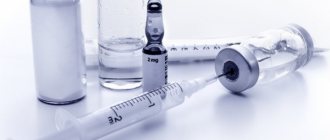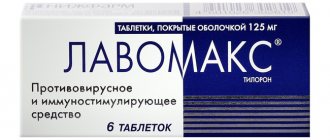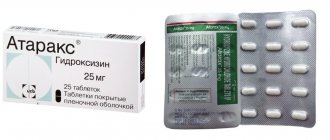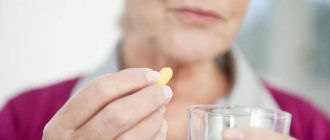pharmachologic effect
Quercetin is an aglycone of the flavonoid glycoside rutin, part of the flavonol subgroup. The antioxidant activity of the drug is associated with its ability to inhibit lipid peroxidation. The drug is able to reduce the concentration of free radicals and toxic peroxidation products. Quercetin stimulates the catalase and superoxide dismutase systems of the body. Anti-inflammatory and antiallergic effects are associated with the ability of Corvitin to inhibit calcium ATPase and leukotriene synthesis. The drug inhibits the activity of hylauronidase. The antitumor effect is manifested due to the inhibition of protein phosphorylation, antioxidant, proapoptotic and antiproliferative effects. It has a positive inotropic effect on the papillary muscle by blocking the activity of Na/K-ATPase. Suppresses thrombogenesis by reducing the synthesis of thromboxane B2. The antiarrhythmic effect is manifested by inhibition of proarrhythmogenic leukotrienes and suppression of oxidative stress. The cardioprotective effect is manifested due to the fact that the drug stimulates the formation of nitric oxide, improving metabolism in the ischemic area. Reduces the size of the ischemic area. Improves recovery processes after stroke and heart attack, restoring microcirculation and blood circulation without significant changes in vascular tone. Quercetin inhibits the activity of 5-lipoxygenase and, as a result, inhibits the synthesis of leukotrienes, which is manifested by an anti-inflammatory effect. Quercetin is able to increase subpopulations of cells of the immune system (phagocytosis, T-lymphocytes, B-lymphocytes), as a result of which the manifestations of secondary immunodeficiency are reduced. Rapidly absorbed after parenteral administration. The highest concentration in the blood is observed after 1 minute. The half-life is 0.73±0.03 minutes. The duration of pharmacological effects is associated with the metabolite chalcone. Quercetin has a stable connection with blood proteins up to 98%. Metabolism of the drug occurs through the hepatobiliary system. Penetrates through the BBB. Eliminated in urine.
L-carnitine
L-carnitine is considered the main form of carnitine. Since carnitine has a chiral center, there is a similar substance, D-carnitine. There are also racemic mixtures of both compounds called DL-carnitine or simply carnitine. The D-carnitine molecule cannot correct carnitine deficiency, since it is biologically inert, and at the same time it can actively act against L-carnitine. The mechanisms of this action include competition for intestinal absorption and reversal of resorption in the kidneys. In fact, supplementation with D-carnitine in isolation may reduce body carnitine stores by inhibiting dietary utilization and cause carnitine deficiency. For these reasons, the L-carnitine molecule is most preferred. L-carnitine is the main form of carnitine, and is the basic carnitine molecule used, since its isomer (D-carnitine) can actually interfere with the effects of L-carnitine (similar to L-arginine, since its isomer, D-arginine, actually blocks its effects). 11) Acetyl-L-Carnitine, also known as ALCAR, or less commonly as Levocarnitine, is a carnitine molecule bound to an acetyl group. Acetyl-L-Carnitine is generally considered to be the neurological version of carnitine, and has a greater affinity for the brain than L-Carnitine. For chronic fatigue, ALCAR may reduce mental fatigue, while other forms (propionyl-L-carnitine) have no significant effect. GPLC is a glycine amino acid bound to a carnitine molecule that is esterified to short-chain fatty acids. When propynol-L-carnitine reaches the mitochondria, it is metabolized into L-carnitine and propionyl coenzyme A. Propionyl coenzyme A has the ability to be converted into succinyl coenzyme A and succinate, which is an intermediate of the Krebs cycle. By converting to succinate as well as carnitine, GPLC supplementation can provide a restorative effect. 12) The initial stages of carnitine metabolism are carried out by the enzyme carnitine acetyltransferase, which also uncouples ALCAR and L-carnitine. In practice, propionyl-L-carnitine appears to be more effective than L-carnitine in matters related to blood flow and regulation. The most significant indication for which PLC is used is intermittent claudication, where PLC provides greater benefit than carnitine even on a molar basis, promoting synergism between the propionyl and carnitine groups. Glycine propionyl-L-carnitine is also used to increase nitric oxide production in sedentary men and athletes in doses of 3-4.5g daily.13) Glycine propionyl-L-carnitine (GPLC) or propionyl-L-carnitine (PLC) are considered to be L-carnitine variants that may improve blood flow and normalize blood pressure more than other forms of L-carnitine. L-carnitine L-tartrate is a salt of L-carnitine bound to hydrochloric acid with a faster absorption rate when measured over 3.5 hours (in pigs), despite no difference in overall bioavailability. It is used quite frequently in sports research due to the faster release of L-carnitine coinciding with activity when taken prior to exercise.14) L-Carnitine L-Tartrate (LCLT) is a form of L-Carnitine that is used in many studies athletes and is believed to promote faster plasma influx after oral administration (in case of time pressure before exercise).
Mode of application
Corvitin is diluted in 0.9% NaCl solution. Add 15 ml of solution and shake the bottle until the powder dissolves. The solution is taken with a syringe and injected into 50 ml of 0.9% NaCl. Acute myocardial infarction: 1st day - infusion of 1 bottle of medication during hospitalization, and after 2 and 12 hours; 2nd-3rd day 1 fl. 2 times a day; 4th-5th day – 1 fl. once a day. Rate of administration: 50 ml administered in 15-20 minutes. Acute stroke: 1st day - infusion of 1 vial. immediately upon hospitalization, after 2 and 12 hours; 2nd-3rd day – 1 fl. 2 times a day; 4th-10th day – 1 bottle. once a day. Rate of administration: 50 ml administered in 15-20 minutes. Surgical treatment of obliterating atherosclerosis with reperfusion syndrome: 10 minutes before removing the clamp from the aorta, infuse 1 vial. Corvitin in 150 ml 0.9% NaCl. Re-introduction 1 vial. in the same dilution is carried out after 12 hours; 2nd–5th days 0.25 g 2 times a day. Rate of administration – 150 ml administered in 30-40 minutes.
Corvitin - instructions for use, analogues, composition, indications
About the drug:
The drug restores regional blood circulation and microcirculation without noticeable changes in vascular tone, increasing microvascular reactivity. Corvitin normalizes cerebral hemodynamics in ischemic lesions, reduces the coefficient of asymmetry of cerebral blood flow in ischemic stroke.
Indications and dosage:
- Complex therapy for acute coronary circulatory disorders and myocardial infarction
- Treatment and prevention of reperfusion syndrome during surgical treatment of patients with obliterating atherosclerosis of the abdominal aorta and peripheral arteries
- Complex therapy for acute ischemic disorders of cerebral circulation (ischemic stroke, transient ischemic attacks) and chronic ischemic diseases of the brain
Physiological solution of sodium chloride 0.9% in an amount of 15 ml is injected with a syringe into the bottle with Corvitin, the bottle is shaken until the lyophilized powder is completely dissolved. The solution formed in the bottle is transferred to a container with the remaining 0.9% physiological solution of sodium chloride. The total amount of physiological solution is 50 ml. In case of acute myocardial infarction, in complex therapy for a quick effect on damaged areas of the heart muscle:
- On the 1st day - Corvitin is administered intravenously at a dose of 0.5 g immediately after hospitalization, after 2 hours and after 12 hours
- On the 2nd and 3rd days - Corvitin is administered at a dose of 0.5 g 2 times a day with an interval of 12 hours
- On the 4th and 5th days - Corvitin is administered in a dose of 0.5 g 1 time per day. Administer over 15–20 minutes
During the surgical treatment of patients with obliterating atherosclerosis of the abdominal aorta and peripheral arteries, with reperfusion syndrome, 0.5 g of the drug diluted in 150 ml of physiological solution of sodium chloride 0.9% is administered intravenously 10 minutes before removing the clamp from the aorta. Subsequent administration in a similar dose is repeated after 12 hours; on days 2–5, a dose of 0.25 g is administered 2 times a day. Inject over 30–40 minutes. In case of acute stroke, in complex therapy for a quick effect on damaged areas of the brain: on the 1st day - Corvitin is administered intravenously 0.5 g immediately after hospitalization, after 2 hours and after 12 hours; on the 2nd and 3rd days - Corvitin is administered at a dose of 0.5 g 2 times a day with an interval of 12 hours; in the period from the 4th to the 10th day - Corvitin is administered in a dose of 0.5 g 1 time per day. Administer over 15–20 minutes.
Overdose:
Not described.
Side effects:
The drug is well tolerated by patients. However, with rapid intravenous administration or in combination with organic nitrates, temporary moderate arterial hypotension may occur. Isolated cases of the following adverse reactions have also been noted:
- From the central nervous system: dizziness, headache, numbness of the tongue, tremor, chills, tinnitus, agitation or general weakness
- Allergic reactions: urticarial rash, urticaria, itching, anaphylactic shock
- Other: facial flushing, chest pain, difficulty breathing
Contraindications:
- Individual sensitivity to quercetin and/or other components of the drug
- Severe arterial hypotension
- Childhood
It is not recommended to use the drug during pregnancy.
Interaction with other drugs and alcohol:
In combination with organic nitrates, Corvitin can cause arterial hypotension. The simultaneous use of the drug with fibrinolytics leads to an increase in the effectiveness of thrombolytic therapy. It is not recommended to use solutions of glucose, rheopolyglucin, etc. as a solvent for the drug Corvitin. The drug Corvitin cannot be administered simultaneously with other solutions of drugs. The drug is used in combination with antianginal, antiarrhythmic , antiplatelet and fibrinolytic agents.
Composition and properties:
Quercetin complex with polyvinylpyrrolidone 0.5 g
Other ingredients: sodium hydroxide.
Release form:
por. lyophil. d/p r-ra d/in. 0.5 g fl., no. 5
Pharmachologic effect:
Quercetin, which is part of the drug, exhibits the properties of a modulator of the activity of various enzymes involved in the degradation of phospholipids (phospholipases, phosphogenases, cyclooxygenases), affecting free radical processes and responsible for the biosynthesis of nitric oxide, proteinases and others in cells. The inhibitory effect of quercetin on membranotropic enzymes and primarily on 5-lipoxygenase affects the inhibition of the synthesis of leukotrienes LTC4 and LTB4. Along with this, quercetin dose-dependently increases the level of nitric oxide in endothelial cells, which explains its cardioprotective effect in ischemic and reperfusion injury of the myocardium. It also exhibits antioxidant and immunomodulatory properties, reduces the production of cytotoxic superoxide anion, normalizes the activation of the subpopulation of lymphocytes and reduces the level of their activation. By inhibiting the production of anti-inflammatory cytokines interleukins (IL)-1β and -8, it helps to reduce the volume of necrotic myocardium and enhance reparative processes. The mechanism of protective action is also associated with preventing an increase in the concentration of intracellular calcium in platelets and activation of aggregation with inhibition of thrombogenesis processes.
Storage conditions:
In a dry place, protected from light, at temperatures up to 25 ° C. The solution of the drug is suitable for use within 12 hours at a storage temperature of 2–8 °C.
general information
- Form of sale:
by prescription - Current issue:
Quercetin
- Manufacturer:
Borshchagovsky Chemical Plant, Scientific and Production Center, PJSC, Kiev, Ukraine
Side effects
The drug is highly safe, with minor negative effects. With rapid administration and combination with nitrates, a decrease in blood pressure is likely to occur. In rare cases, dizziness, headache, body tremors, chills, numbness of the tongue, increased anxiety, restlessness or general weakness, and ringing in the ears are observed. In case of hypersensitivity, allergic manifestations develop in the form of skin rash, urticaria, and in isolated cases anaphylactic shock. Rare manifestations include difficulty breathing due to pain in the chest and redness of the face.
Release form
In pharmacies and specialized stores, the drug can be purchased in one of the following release forms:
- tablets (for which the main powder component is compressed into a round pill);
- capsules (same powder);
- solution (powder dissolved in water, with various flavoring additives);
- pure powder.
Reference! The easiest way for the body to absorb L-carnitine is in the form of a solution, a little more difficult - in the form of powder and capsules, and worst of all - in tablets. According to buyers, based on the price range and effectiveness of administration, the optimal form of release is “l-carnitine tartrate” 500 mg.
What is Acetylcarnitine
Acetyl-L-carnitine is a derivative of levocarnitine. The bioavailable compound does not require significant time for absorption by the body. Acetyl L carnitine takes an active part in the transport of oxygen to cellular elements.
It is known that a significant portion of energy is consumed by the brain. Acetyl-L-carnitine has a significant effect on it. That is why taking Alkar is often recommended for increased mental stress.
Important! Acetyl L carnitine neutralizes the harmful effects of free radicals on the body.
Indications for use
Acetyl-L-carnitine should be taken in the following cases:
- anxiety disorders;
- memory loss;
- male factor infertility;
- pathological changes in the blood supply to the brain;
- cataract;
- excessive consumption of alcoholic beverages;
- smoking;
- recovery period after cerebral ischemia.
We recommend reading: Vitamins for pregnant women Solgar: reviews, instructions
The use of the isomer is indicated when the functions of the immune system are reduced due to its positive effect on the bone marrow. Research results confirm that the compound increases testosterone production due to its effect on the hypothalamus. That is why Acetyl-L-carnitine is prescribed for infertility caused by deterioration in the quality of male reproductive cells.
The use of Alkar increases performance, reduces fatigue, and improves psycho-emotional state. Weight loss can be expected when acetyl-L-carnitine is combined with adequate physical activity.
How the supplement works
The action of L-carnitine is to transport fats into the mitochondria of cells, where they are used by the body as energy sources. There, fats undergo an oxidation process and turn into a kind of fuel for our body. This process occurs both at rest and during physical activity, but in the second case it is much more active.
The human body with a lack of L-carnitine is unable to break down fats in the required quantities and this is a serious disorder that doctors eliminate. The consequences of such a disorder are not only obesity, but also slow growth in children, muscle weakness, increased liver size, etc.
The supplement can be taken without training, but in this case you should not expect a fat-burning effect, especially if you follow a calorie diet
L-carnitine for children
Doctors have found that breastfed children receive levocarnitine through their mother's milk. When artificial feeding, nutritional mixtures must be additionally enriched with carnitine.
This is especially important for premature babies or children with problems of cardiovascular failure, birth injuries, asphyxia, and anemia. Typically, such babies do not gain weight well, have a weak sucking reflex and reduced muscle tone. Adding levocarnitine to the baby’s daily diet helps cope with all these problems. The best known medicine is Elkar, which is widely used in pediatrics.
L-carnitine for athletes
During aerobic exercise, levocarnitine significantly increases the body's endurance. That is, those who run, jump, walk, and swim after taking the drug feel a surge of strength, which means they can afford additional exercise. If a person does not need to reduce body weight, then the maximum effect of energy production is achieved with a high-calorie, fatty diet.
L-carnitine is an important component in muscle regeneration processes, which allows it to be used by bodybuilders. This substance also helps reduce lactic acid levels, which provides additional endurance.
Side effects of Carnitine
Taking the drug Carnitine can cause an allergic reaction in the body. Some patients with uremia who take this drug may experience muscle weakness.
If the drug is administered to the patient into a vein and the rate of administration is too fast, the patient may feel pain in the vein into which Carnitine is injected. Pain may not appear or may decrease if the rate of drug administration is adjusted.
If the dose of the drug is adjusted incorrectly, patients may experience unpleasant heaviness or pain in the epigastric region, in which case the dose should be reduced.









